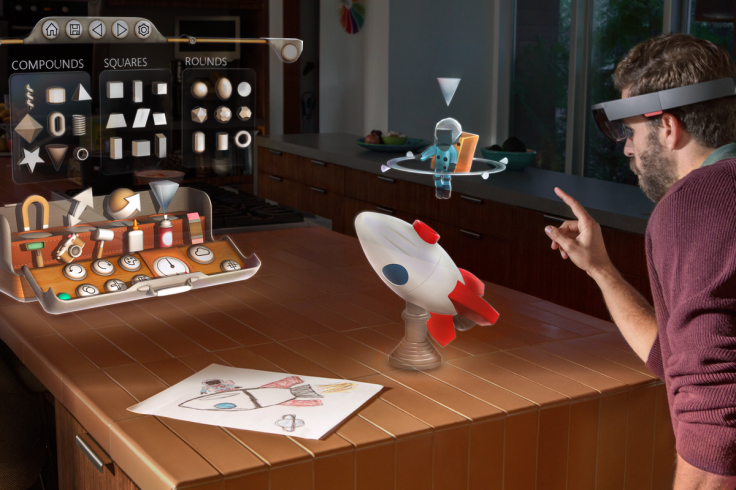Microsoft HoloLens Preorders Start, Bundled With Three Games And Access To 'Hundreds' Of Apps

It's the virtual reality platform that it seemed would never get a release date. Microsoft’s HoloLens developer kit, the company’s first foray into VR and augmented reality hardware, is finally available for preorder. The $3,000 kit will start shipping in the U.S. and Canada on March 30, bundled with three games, a variety of holographic experiences and documentation on how to build HoloLens-compatible Windows 10 universal apps.
Microsoft is promising “immediate access” to “hundreds” of universal apps, including Microsoft Office, Skype, OneDrive and Remote Desktop. The goggles, which augment the world around the user with virtual reality images, are a self-contained PC running a special version of Windows 10. There’s no tethering involved, and apps are installed directly to the headgear.
The developer kit also includes three new games. The first, “Fragments,” is a crime drama that has the player hunting for clues and exploring a slowly unfolding story, with some characters even sitting down next to the player on real-life furniture.
The second, “Young Conker,” is a platformer that changes the level depending on the shape of the real-life room. The third, “RoboRaid,” was previously demonstrated under the name “Project X-Ray.” The game involves shooting robots as they make their way through the player’s walls into the living room.
Microsoft has previously demonstrated some bold and exciting ways HoloLens could be put to good use. In December, the company showed a virtual 3D printing studio, where the user can create virtual objects, preview them in the room and bring them to life with a 3D printer. That app, known as “HoloStudio,” will be available to developers in the Windows Store.
NASA has also partnered with Microsoft to send HoloLens kits up into space to help astronauts. The goggles can be used to overlay instructions over parts that need fixing, allowing for hands-free repairs and diagnostics.
It’s only the beginning, but with these initial apps, Microsoft will be looking to inspire developers to come up with their own unique ideas. Wider availability has yet to be announced, but users will be in for a treat if third-party apps surpass Microsoft’s initial demonstrations.
© Copyright IBTimes 2024. All rights reserved.












